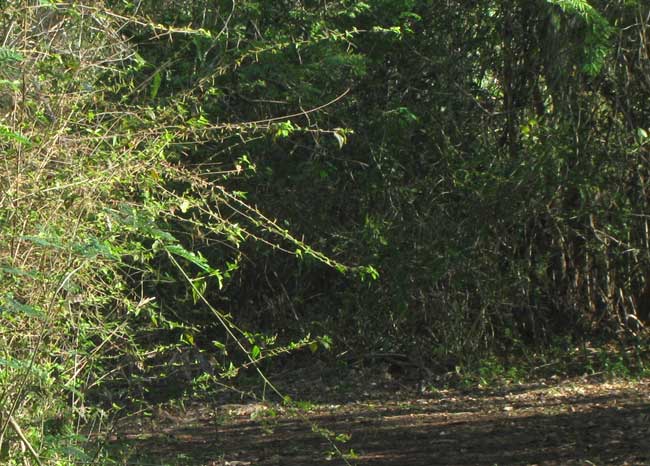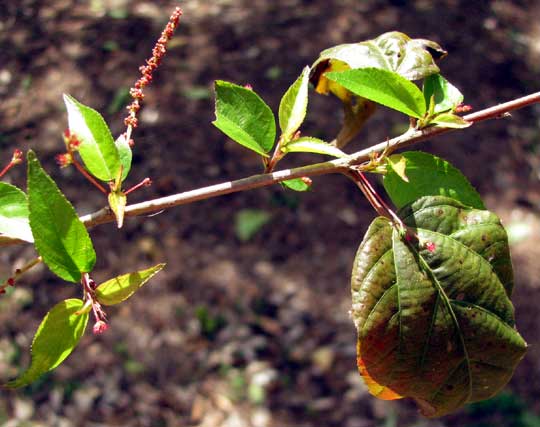Excerpts from Jim Conrad's
Naturalist Newsletter

from the February 20, 2011 Newsletter issued from Hacienda Chichen Resort beside Chichén Itzá Ruins, central Yucatán, MÉXICO; limestone bedrock, elevation ~39m (~128ft), ~N20.676°, ~W88.569°
A SHRUB ACALYPHA
Acalypha is a genus in the Poinsettia or Euphorbia Family, the Euphorbiaceae. The genus is worth knowing because in the Americas you run into it frequently, and it includes some important ornamentals. About 450 species are assigned to it, mostly tropical and subtropical shrubs, trees and herbs. Weakley's Flora of the Southern and Mid-Atlantic States lists seven species for that area, naming them copperleafs. Also the name Three-seeded Mercury is given to a weedy, herbaceous Acalypha growing in much of that area.
Nowadays in central Yucatán a common, much branching, shrubby member of the genus, ACALYPHA LEPTOPODA, is conspicuously flowering at woods edges and along trails. There's no common English name for the plant, so I just call it Acalypha. It's Ch'ilib Tux or Sak Kip in Maya. Its seven-ft-high (2m), slender, arching branches are shown avalanching into an open area at the top of this page.
Its branches bear old leaves, newly sprouting leaves, long, slender spikes of male flowers and short, blunt spikes of female flowers with red styles, as shown below:

A close-up of a female spike with its red styles is shown below:

In that picture notice the saucer-like, several-toothed, greenish "foliaceous bracts," or modified leaves, doing calyx service below the ovaries. Conspicuous foliaceous bracts subtending ovaries is one of the main field marks for the genus Acalypha.
The male spikes, once their pollen loads have been released, fall off, but of course the female flowers' ovaries remain on the branches, growing and maturing until they become fruits bearing viable seeds. You can see two semi-matured fruits with their much-enlarged foliaceous bracts beneath them below:

Three-lobed ovaries are typical of the Euphorbia Family. The vast majority of ovaries of dicot plants have parts in fours or fives, or multiples thereof, not three.